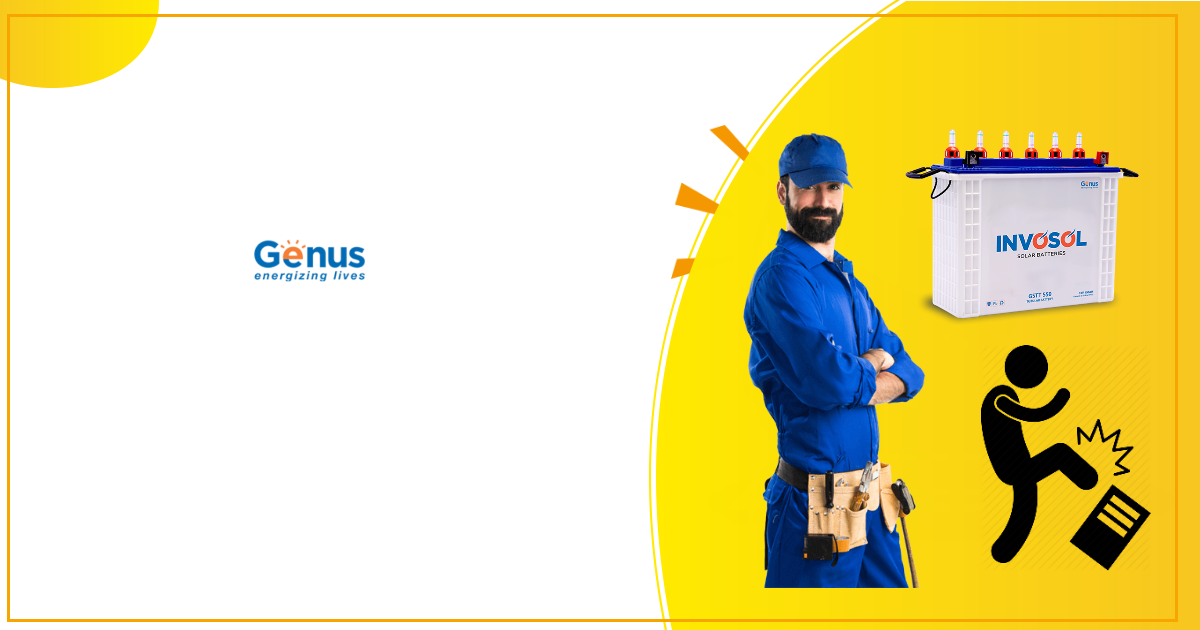
If you thought that investing in a solar-powered system was the end of your responsibility towards the environment, think again! Yes, it is true that, by substituting fossil fuel-based energy sources with solar energy, you can reduce the emission of noxious gases. And this might make you believe that you have taken care of the environment as well as your pocket.
However, the story does not end here. The batteries you installed for storage and backup are not that environment-friendly (more on that later). Even if it is well maintained, a solar battery set is not going to last you for more than 15 years. On the other hand, your PV panels will last you for 25-30 years. In other words, there is one replacement to be planned, and one occasion for you to dispose the batteries.
The Environmental Hazard and Safety Issue
The two most common types of batteries in use today are lead-oxide and lithium-ion. E-waste and battery waste are an issue especially in developing countries and emerging economies with serious hotspots in many urban areas. Here, collection and recycling are often performed by the informal sector, with little regard to emission control or the impact on human and environmental health.
By weight, about 65% of lead-acid batteries is lead and lead oxide, and another 10 –15% is sulfuric acid. Lead is a highly poisonous heavy metal that has numerous adverse effects on various human organs when swallowed or inhaled. Higher exposure to lead can cause severe damage to the brain and kidneys for instance. Apart from causing a wide range of symptoms, it can ultimately lead to death. Sulfuric acid, though not a cumulative poison like lead, is also an area of concern from the safety point of view.
Now, lithium-ion batteries are catching on because of their superior Depth of Discharge (DoD) and longer life span. DoD refers to the maximum percentage of a battery’s power that can be used before recharge—these batteries can maintain a 98% efficiency at close to 100% discharge. Though less toxic, lithium is highly reactive and not easy to recycle.
Recycling and Disposal
Lead oxide: Easily dismantled, these can be recycled by up to 95%. Due to their high lead content and the quite stable and attractive world market prices for lead, waste lead-acid batteries and lead-scrap are collected and recycled all over the world – even in settings where collection and recycling are not supported by the organised industry. Small workshops conduct this operation at the local level, providing an incentive for not merely dumping these batteries into waste pits. So, this is how you can dispose such batteries. Bonus Tip: Ask your vendor to provide you with a buy-back quotation, and he will take care of the recycling.
Lithium-Ion: While there are various compositions available, LFP (Lithium, Iron, Phosphate) and LMO (Lithium, Manganese Oxide) are the preferred variants for solar batteries. Lithium is highly reactive and combustible, and so, its recycling is an issue highlighted in-depth in this study. Accordingly, only 50% is recycled—and that too with the active participation of all stakeholders. Compared to lead-acid, LMO and LFP batteries have little recycling value and are therefore quite unattractive for local and global recycling markets. As a result, they are more likely to be disposed of in an uncontrolled manner. The best thing to do in this case is to include the recycling cost in your project calculations and at the EOL (end of life) write that off against the budgeted cost.
So, What to do?
As battery recycling relies on the accumulation and management of larger battery volumes, the thermal runaway of one cell can ignite other cells and cause larger battery fires, damaging entire storage and recycling facilities. Overcharging, high temperatures and physical stress to battery cells can cause a thermal runaway, which often leads to the destruction of the battery, or causes a fire and even explosions.
To prevent that, it is recommended to undertake a manual discharge of batteries. A full discharge of all cells can effectively minimize fire risks, but it is also associated with labour costs of embedding each battery in sand or a bucket. While discharging devices and processes, it needs to be ensured that workers are not subjected to electrical shocks.
To conclude, it will be best to contact experienced and reputed vendors like Genus who can hand-hold you through the recycling and replacement of solar batteries, apart from the initial installation.
